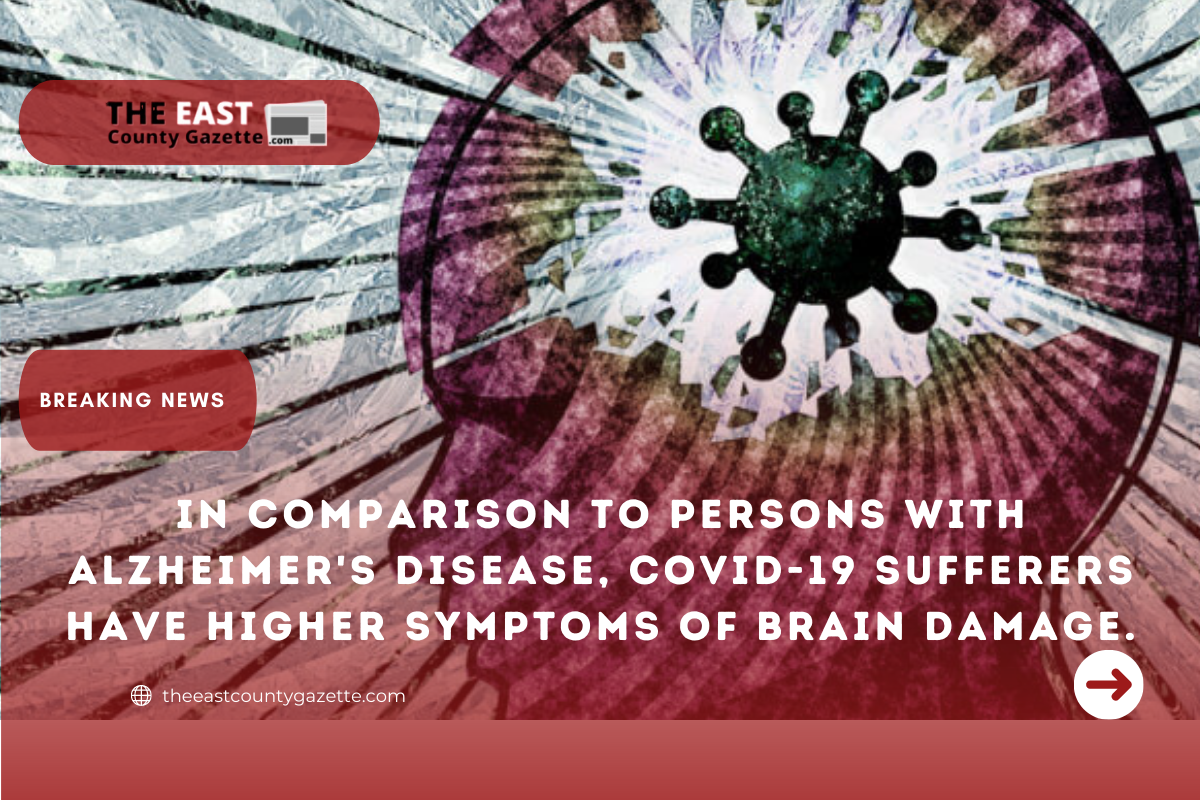Is it possible that COVID-19 is causing greater damage to the human brain than Alzheimer’s disease? According to the findings of a recent study, older patients who catch COVID show more evidence of brain damage than people who do not contract the neurodegenerative disease.
In particular, a study from the New York University Grossman School of Medicine discovered considerably greater amounts of certain blood proteins, which are generally elevated when someone suffers neurological impairment, in COVID patients.

According to the researchers, seven signs of brain damage were significantly greater in COVID patients with Alzheimer’s disease than in non-COVID patients with the disease across the short-term course of their infections. One of these markers was more than twice as high in coronavirus patients as it was in the general population.
Researchers found that patients admitted to a COVID-19 inpatient facility, and particularly those who experienced neurological symptoms during their acute infection, may have levels of brain injury markers that are on par with, or higher than, those found in people with Alzheimer’s disease, according to lead author Jennifer Frontera MD, a professor in the Department of Neurology at the University of California, San Francisco.
What types of blood indicators should COVID patients be concerned about?
According to the study’s authors, the disease toxic metabolic encephalopathy was the most common symptom of brain injury among COVID patients (TME).
Severe symptoms, ranging from confusion to coma, can occur as a result of toxins produced by the immune system in response to an infection (sepsis), kidney failure, and a lack of oxygen in the tissue.
During the first few months of the pandemic in 2020, the team assessed 251 persons who had been admitted to the hospital with COVID-19.
In spite of the fact that the participants had an average age of 71 years, they were all in generally good condition and had no history of dementia or cognitive decline prior to their COVID infection. The patients were divided into two groups by the researchers: those who had neurological symptoms as a result of COVID-19 and those who did not.
On the basis of this information, the team compared these individuals to a group of controlled patients drawn from the Clinical Core cohort of the NYU Langone Alzheimer’s Disease Research Center (NYU Langone).
As part of NYU’s long-term study of dementia, 54 healthy people were included, 54 with mild cognitive impairment, and 53 with Alzheimer’s disease. The participants ranged in age from 54 to 53. During the course of the trial, none of the control patients got COVID-19.
Read More: Schedule for SNAP Benefits in 2022: Lone Star Card Benefits Schedule
UCHL1 (ubiquitin carboxy-terminal hydrolase L1), total tau (tau), and phosphorylated tau-181 (ptau181) are three blood markers that have been identified as being associated with neuronal death or disturbance in the brain, which the investigators were looking for.
When the axons of the brain are damaged, the levels of the neurofilament light chain in the brain rise. These are neuronal extensions that look like branches that have grown from the neurons.
Increased levels of glial fibrillary acidic protein (GFAP) indicate injury to glial cells, which are a kind of brain cell that supports neurons in the central nervous system. Finally, amyloid-beta 40 and 42 are common markers of Alzheimer’s disease that typically accumulate in the brains of those suffering from the disease.
Researchers discovered that the seven brain damage markers were much higher in COVID patients with TME than in those who did not experience neurological symptoms.
When the axons of the brain are damaged, the levels of the neurofilament light chain in the brain rise. These are neuronal extensions that look like branches that have grown from the neurons.
Increased levels of glial fibrillary acidic protein (GFAP) indicate injury to glial cells, which are a kind of brain cell that supports neurons in the central nervous system. Finally, amyloid-beta 40 and 42 are common markers of Alzheimer’s disease that typically accumulate in the brains of those suffering from the disease.
Researchers discovered that the seven brain damage markers were much higher in COVID patients with TME than in those who did not experience neurological symptoms.
In fatal COVID cases, brain damage is significantly more severe.
The researchers discovered that the signs of brain injury were considerably greater among patients who did not survive their coronavirus infection, which is a cause for concern. Patients who died from COVID had markers that were 124 percent greater than those who survived and were discharged from the hospital.
Researchers discovered that, when compared to Alzheimer’s patients, indicators for neurofilament light chain were 179 percent greater in coronavirus patients over the course of a short time period. In addition, levels of GFAP were found to be 65 percent greater in COVID patients when compared to those suffering from dementia.
Traumatic brain injury, which is also associated with increases in these biomarkers, does not guarantee that a patient will develop Alzheimer’s disease or related dementias later on, but it does increase the risk of developing them, according to senior author Thomas Wisniewski, MD, director of the Center for Cognitive Neurology at NYU Langone Medical Center.
Read More: Democrats Contemplate Ways to Resurrect the Child Tax Credit
If such a relationship exists in individuals who survive severe COVID-19, it is an issue that needs to be answered immediately through continued surveillance of these patients.

